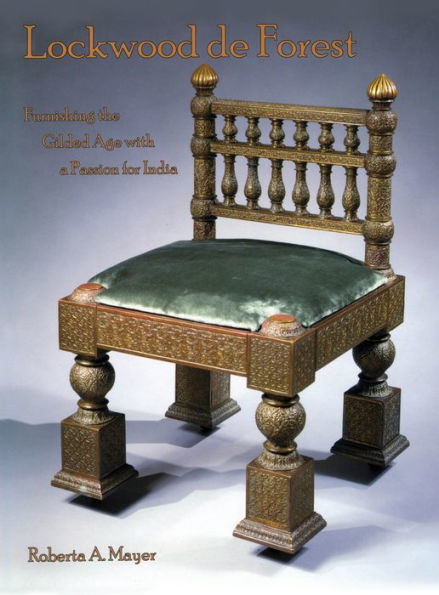5
1

Lockwood de Forest: Furnishing the Gilded Age with a Passion for India
238
by Roberta A. Mayer
Roberta A. Mayer

Lockwood de Forest: Furnishing the Gilded Age with a Passion for India
238
by Roberta A. Mayer
Roberta A. Mayer
Hardcover
$107.00
-
PICK UP IN STORECheck Availability at Nearby Stores
Available within 2 business hours
Related collections and offers
107.0
In Stock
Overview
Born and raised in New York City, Lockwood de Forest (1850–1932) has long been recognized as an early business partner of Louis Comfort Tiffany (1848–1933). He began his career as a painter trained by Frederic E. Church with connections to the Tenth Street Studio, the National Academy of Design, and Society of Decorative Art in New York, and emerged as an artistic decorator with a specialty in richly appointed interiors that boasted heavily carved East Indian architectural elements and furniture. Though his formal ties with Tiffany lasted only two years, de Forest continued an independent career in the decorative arts that extended into the early twentieth century.In this book—the first that focuses scholarly attention on de Forest’s career in the decorative arts—Robert A. Mayer argues that his commitment to India cannot be understood without exploring the larger context of the East Indian craft revival, a self-conscious attempt by the British colonial government to create a Western market for handmade, East Indian goods. This endeavor brought together many different individuals—Queen Victoria in her role as Empress of India, the Price of Wales as a cultural ambassador, key enthusiasts employed by the Indian Civil Service who emerged as collectors and connoisseurs, the ideology of the English arts and crafts movement, the art schools of India, and hereditary craftsmen of India who had lost their traditional patrons. De Forest was the only American represented within these intersecting circles, and part of his commitment to India was fueled by his concern that East Indian arts and crafts were dying and his belief that American patronage could reverse this trend.Mayer further suggests that de Forest embraced India because of his desire to achieve authority in an intellectual pursuit that was equal to, yet different from, those of his brothers, both of whom were successful lawyers. She provides a complete view of his career, from his early idealistic ideas, to his success in courting Gilded Age millionaires, to the fading of demand for opulent Indian rooms. In doing so, she balances de Forest’s memoirs of his experience of India in the 1880s and the 1890s with those more tempered recollections of his wife, Meta Kemble de Forest (of the du Pont family), and also acknowledges the perspectives of his contemporary critics.De Forest’s house and studio at 7 East Tenth Street survives today as the Edgar M. Bronfman Center for Jewish Life at New York University. In his role as a decorative artist, he had major patrons in New York City and the Hudson River Valley, including Frederic Edwin Church (for Olana), William Henry Appleton (for Wavve Hill), and Andrew Carnegie (for his mansion, now the Cooper Hewitt, National Design Museum). Complemented by 182 black-and-white photos and illustrations.

Product Details
| ISBN-13: | 9781611493139 |
|---|---|
| Publisher: | University Press Copublishing Division |
| Publication date: | 01/01/2009 |
| Pages: | 238 |
| Product dimensions: | 8.80(w) x 11.20(h) x 0.80(d) |
About the Author
Roberta A. Mayer is associate professor of art history at Bucks County Community College.
From the B&N Reads Blog
Page 1 of
